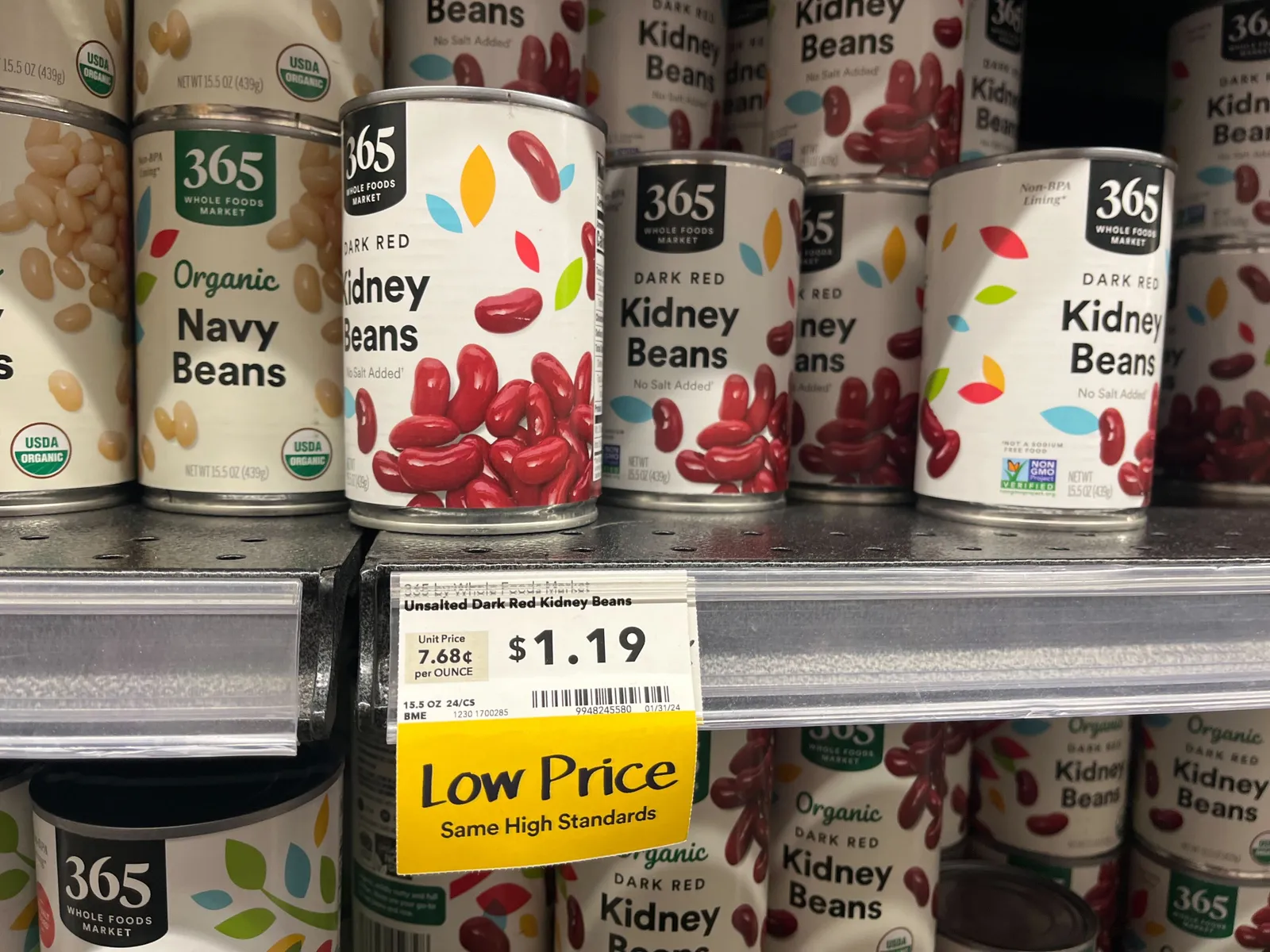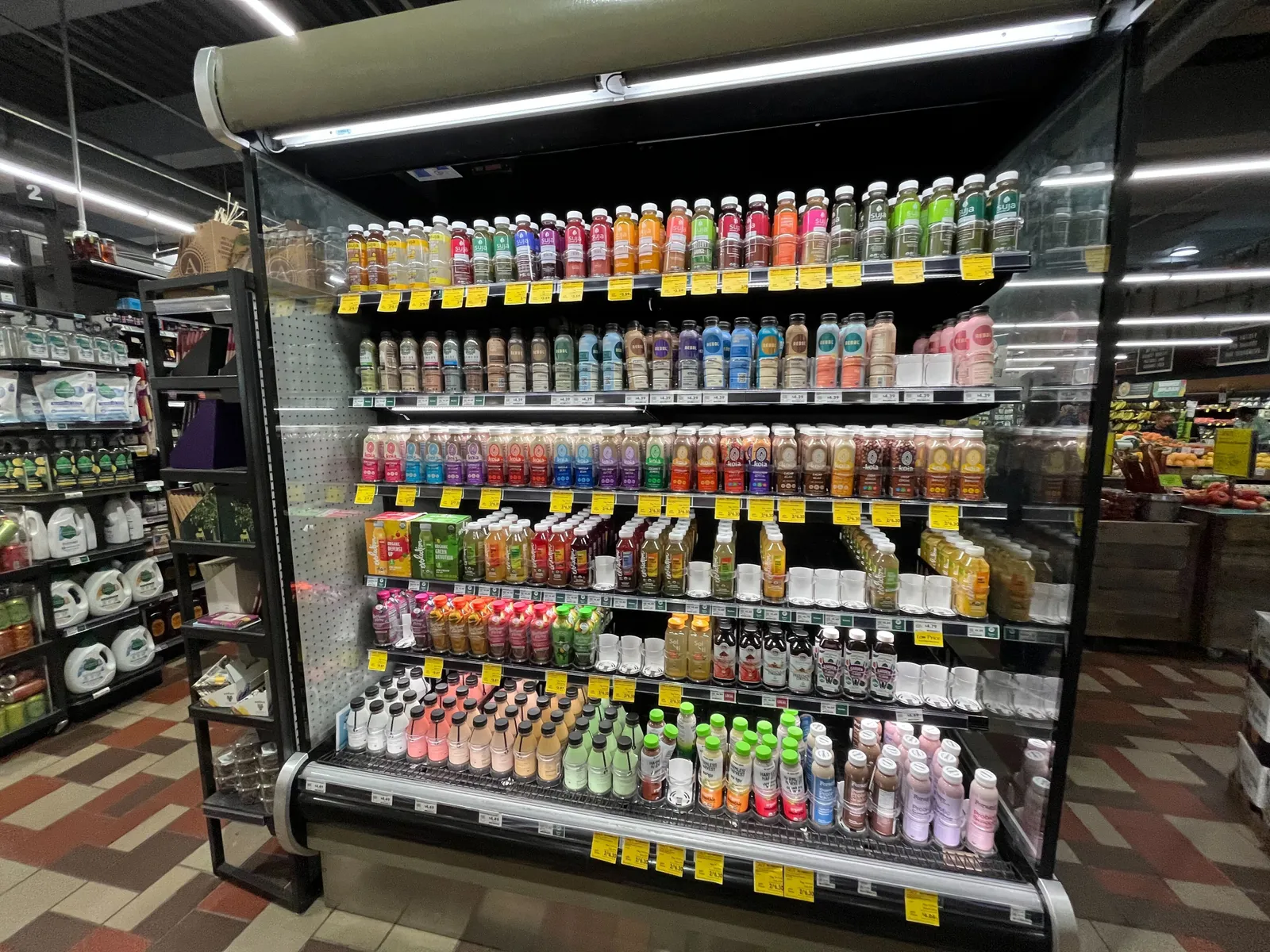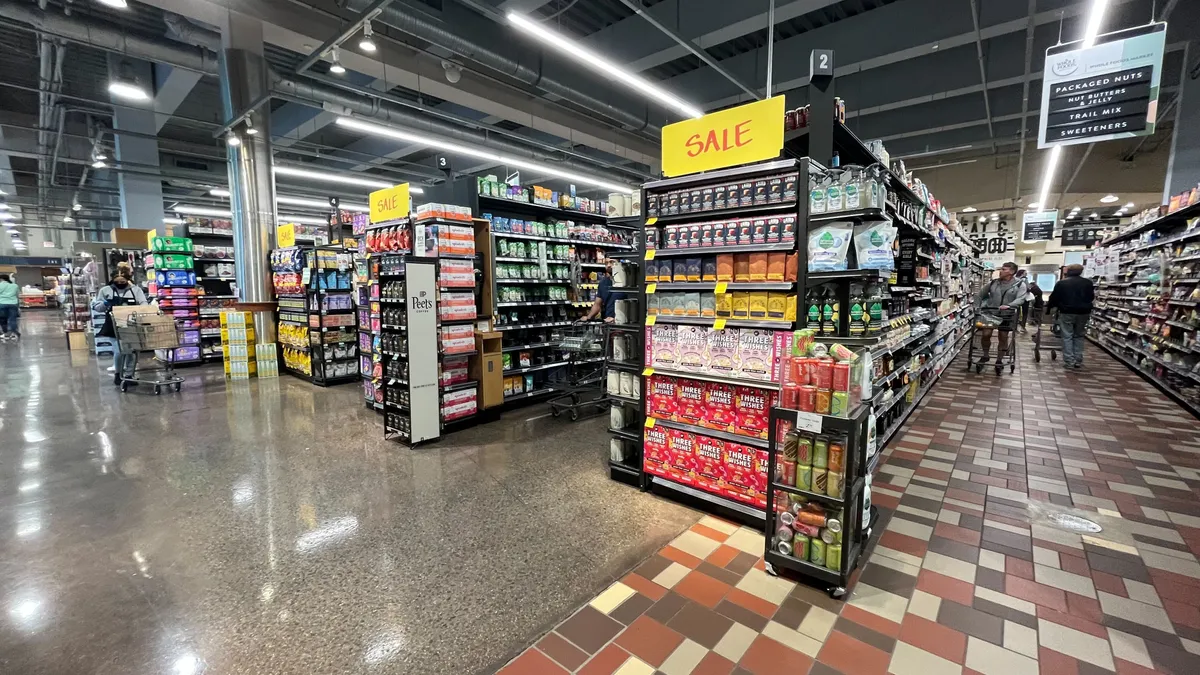Swarms of yellow tags with value messaging are becoming increasingly commonplace at Whole Foods Market stores, and now CEO Jason Buechel is saying the specialty chain is implementing price investments to ease the pressures of inflation for its customers.
A Whole Foods store on P Street in Washington, D.C., has tags throughout numerous departments, from produce to fresh foods, marking items as “Low Price,” while others say “Sale,” noting the original price, the new sale price and a markdown if a customer is an Amazon Prime member. Nearly all of the endcaps have a giant yellow sign with “SALE” in red lettering.
Along with the special sale pricing, the store spotlights additional savings for Prime members, like a dozen responsibly farmed or sustainable wild-caught oysters for $12 on Fridays and $2 off rotisserie chicken on Tuesdays.

For years, Whole Foods has been trying to chip away at its high-price image with sale tags and Prime membership discounts. But this strategy appears to have accelerated in recent months as the specialty grocer tries to win over shoppers who are also stopping by discount grocers, supermarkets and even Walmart stores to fill up their fridges and pantries.
The writing is on the yellow tags. But can the Amazon-owned grocer really shed its “Whole Paycheck” reputation?
Last week at the Milken Institute’s Global Conference, Buechel told Yahoo Finance that the chain is increasing the number of promotions it offers and making its private label goods more affordable in an effort to minimize the impact of inflation and appease shoppers bogged down by high food prices. Buechel noted that Whole Foods has seen double-digit unit sales growth on promotional items since upping its promotional efforts.
“[We’re] making sure our customers can shop any part of the store and we can make it accessible,” he told Yahoo Finance. “And, no matter what your budget, you can create a great meal with products that we carry.”

Anne Mezzenga, co-host of retail podcast Omni Talk and a former Target executive, said in emailed comments that a price push like this is something “that Whole Foods has to try.” She noted that the alternative of scaling back on their private label offerings could mean losing customers to retailers like Trader Joe’s, Aldi and Sprouts Farmers Market.
While Whole Foods being an affordable grocer might be a difficult concept for the public to grasp, the grocer does have the power to bring shoppers an especially convenient shopping experience. Pairing that with a “more affordable trade down option like 365” will help Whole Foods attract and retain customers, Mezzenga added, referring to the grocer’s house brand.
However, not everyone is buying Whole Foods’ recent price-sensitivity tactics.
Neil Saunders, managing director of retail for GlobalData, took to LinkedIn earlier this week to say these efforts “completely [miss] the mark” and won’t work to shake the grocer’s expensive store image.
According to Saunders, Whole Foods’ method of lowering prices on private label goods won’t be effective because the retailer’s high-priced national brands contribute to its reputation as a costly place to shop.
“[T]o focus on reducing prices in private label is not resolving the core issue,” Saunders said in an emailed statement. “Certainly, more investment in sharper private label prices will be welcome and it may well help consumers to make a basket of goods more reasonable, but it will not stop the comparisons on branded goods which make Whole Foods feel like a rip-off.”

In regards to overall value, Saunders said he does not see Whole Foods doing enough to justify its higher prices: “They do offer healthier, better quality food but they need to augment that with really great customer service, fantastic taste and food innovation. In all these areas, they’re currently lacking.”
If Whole Foods’ higher prices are causing problems, the grocer isn’t showing it. Buechel told Yahoo Finance the company aims to have 30 new stores a year in its pipeline, including in its small-store concept, Daily Shop.
Catherine Douglas Moran contributed reporting.














